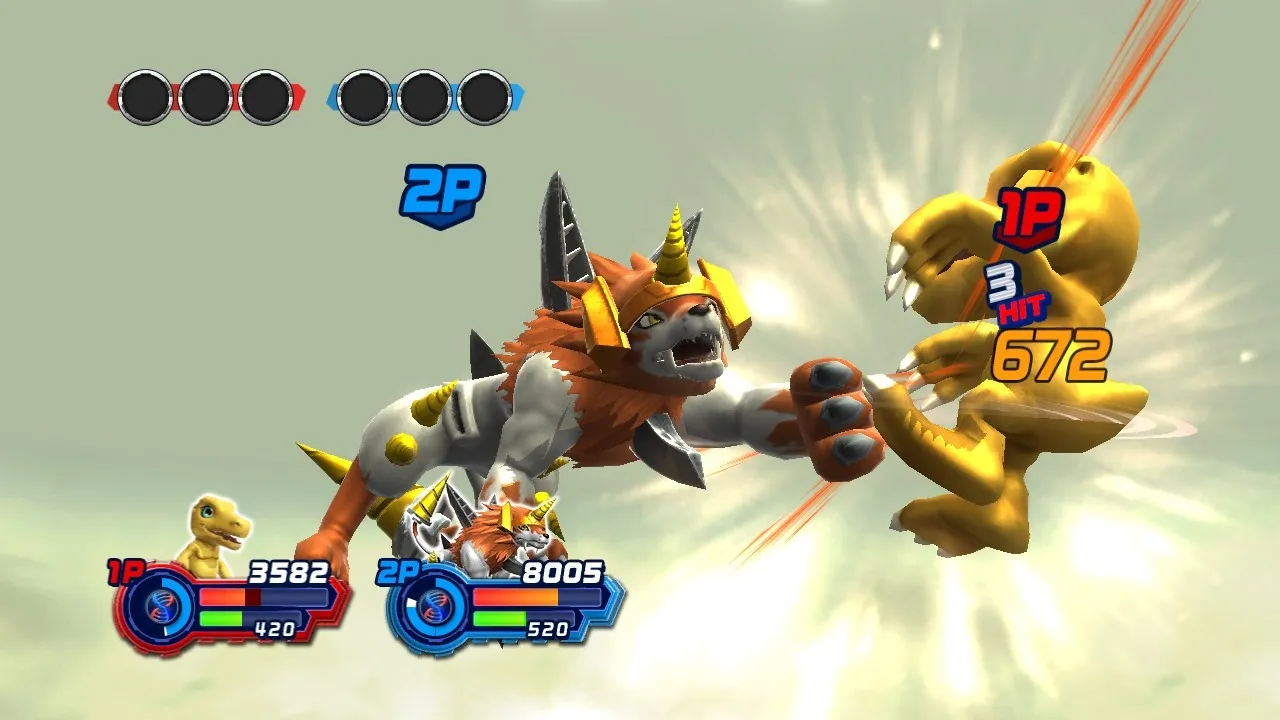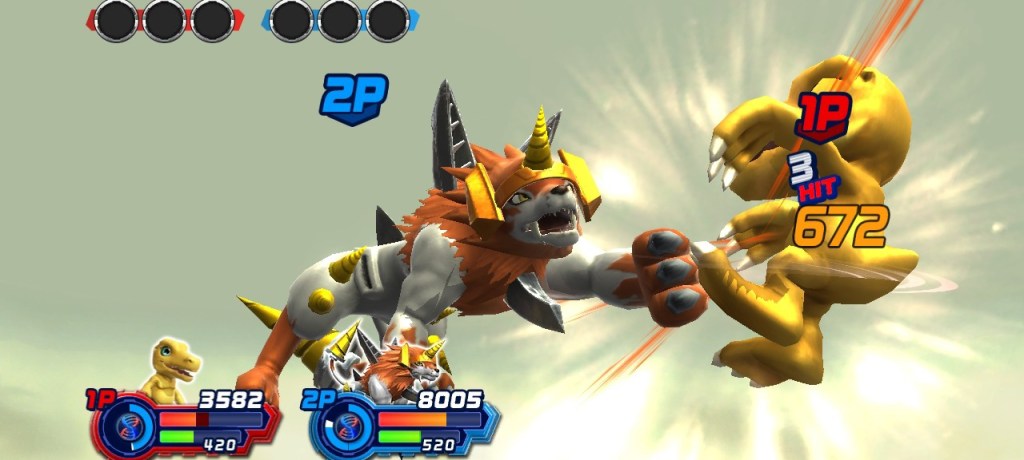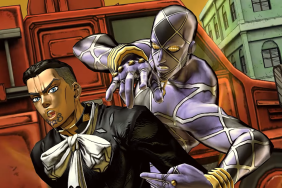Ah, Digimon. I remember you well. You appeared somewhere between Pokemon and Yu-Gi-Oh! on the children’s fad timeline, and while I found the series’ premise interesting as a youngster, it never stuck the way the other two did. Pokemon become a global phenomenon and permanent gaming mainstay, but what of Digimon in 2014? Well, that’s what I’ve been trying to find out playing Digimon All-Star Rumble.
All-Star Rumble is something of a spiritual successor to the PlayStaton 2 titles of a similar name, and if you’re wondering why Namco Bandai would release a non-technical party brawler during the same month as the latest Super Smash Bros., I’m afraid I don’t have an answer for you. Interestingly, All-Star Rumble is actually exclusive to the West. While Japan has seen the release of reasonably well-received titles such as Digimon Story: Cyber Sleuth and Digimon World Re: Digitize, Namco Bandai has instead opted to deliver entirely new content in the USA and elsewhere. At first, I was flattered. As I played, I began to feel mildly offended.
Effort Isn’t Everything
It’s not that All-Star Rumble doesn’t try its best — developer Prope clearly appreciates the series, its history, and the fact that Digimon still commands a sizable legion of passionate fans. Rather, as I played All-Star Rumble, I got the sense that Prope was never given the tools it needed to succeed. Time, money and supervision are all things most studios need to thrive, and I’d be shocked if any of the three were amply provided during All-Star Rumble’s creation.
All-Star Rumble’s oddest trait is that it places Story Mode front and center. This isn’t an inherently flawed choice, but even the best fighters lack a truly interesting narrative, and All-Star Rumble is no exception. The main antagonist at play is boredom — and no, I’m not talking about my personal opinion. I’m saying that literally, the game presents “boredom” as the reason turmoil has erupted in the digital world, as the Digimon became so bored with peace and prosperity that they began fighting each other and causing chaos again. It’s a tough premise to swallow, but I went along with it initially. Or at least, I tried to.
Problems really begin to arise when ignoring the story and cheesy-even-for-kids dialogue (not voice acted, by the way) does little to help the experience. Each stage or level involves traversing awkwardly constructed and painfully small platforming environments, seeking fellow Digimon to challenge and defeat. If you’re a Digimon fan you’ll probably be pleased with the selection of ‘mon you can play as (there are over 12, with 32 forms), but don’t get too excited — each character’s story is nearly identical, with only slight variation. The levels and encounters remain about 80% the same, and that’s being generous.
Stuck in No Man’s Land
Each level or area culminates with a boss fight, during which you finally experience the fighting that this fighting game is based around. Comparisons to Smash Bros. are unavoidable, but the truth is that All-Star Rumble is probably more similar to something like Capcom’s Power Stone than Nintendo’s acclaimed brawler. I suppose you could rope PlayStation All-Stars into the discussion as well, but when push comes to shove, the comparison is largely moot.
The reason for this, sadly, is because All-Star Rumble’s combat during battle is incredibly dull. Yes, there are combos you can string together, but without the deliberate movement shackles a standard technical fighter would provide, how can you ever expect to land them? Instead you’ll likely take a Smash Bros. approach, only to discover that the game also lacks the layers of depth Smash possesses specifically because it isn’t a technical fighter. All-Star Rumble’s awkward placement in the fighting-game pantheon means it doesn’t quite know what it wants to be, resulting in button-mashing winning the day as the most viable strategy nine times out of ten.
The silver lining and sole motivation to continue playing is the unlocking of new Digimon fighters. When you defeat an opponent at the end of a level, it will join the roster and become available to you. As mentioned earlier, the story doesn’t change much for each Digimon, but that doesn’t mean I didn’t enjoy trying them all and getting a feel for the strengths and weaknesses of each. An odd side effect of the game’s lack of depth is that you’ll actually try, spend time with, and become decent with nearly every character you unlock. In a more advanced fighter, or even Super Smash Bros., the tendency is to shy away from playing each character lest you get in over your head. Here, it’s hardly a concern.
Your ‘Mon are in Another Castle
If Story sounds boring (which it largely is), you can hop right into the action with Battle Mode, but it only serves to draw more attention to the battle system’s painfully obvious lack of substantial or long-term depth. There’s a power meter that can be used to execute more devastating attacks, as well as power-ups that are occasionally creative (becoming huge ala the Super Mushroom is particularly fun), but they can also be quite jarring; the moment you begin to get a handle on the game’s oddly inaccessible yet equally unuseful combos, a foe grabs a power-up and easily puts you to bed regardless. Thoughts such as “why did I even bother not button mashing?” began to creep into my mind more and more frequently, and I don’t need to explain why that’s a negative for a fighting game.
At the end of the day, I do appreciate the effort here, especially when you consider All-Star Rumble’s status as a Western exclusive. That said, the game’s conspicuous lack of quality seems almost suspicious. It’s hard to imagine a publisher saving money on localization by developing an entirely new game instead, but if such a game were to exist, Digimon All-Star Rumble would surely be it. This may hold the Digimon faithful over for a month or two, but in the long haul, localized editions of proven Japanese Digimon tiles can’t come soon enough.
Review copy was provided by the publisher. For information on scoring, please read our Review Policy here.
-
Namco Bandai made a new Digimon game
-
It's a Western exclusive, which is cool
-
There's a solid selection of Digimon to choose from
-
Story mode is front-and-center when it shouldn't be
-
All gameplay outside of standard fighting is tremendously half-baked
-
Fighting itself becomes dull after just a few hours
-
Button mashing is usually the best strategy
-
The game's existence is a mystery when better Digimon titles could have been localized
Digimon All-Star Rumble
-
Digimon All-Star Rumble #1
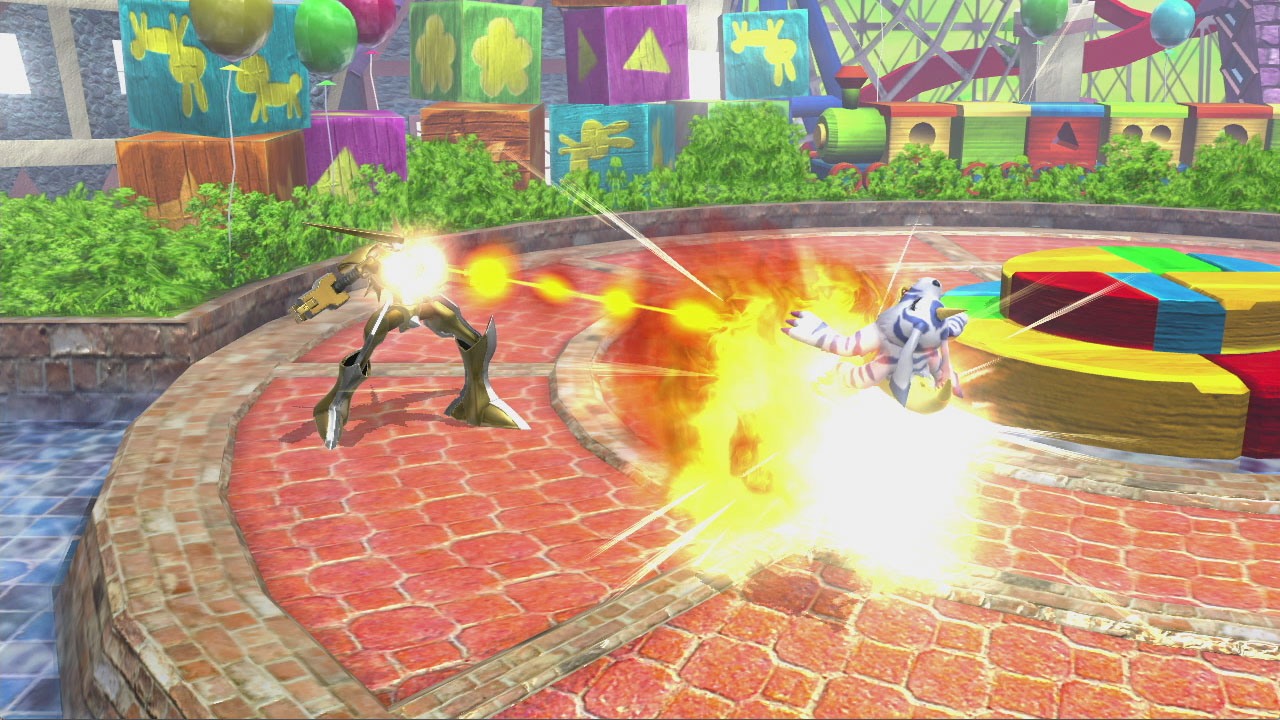
-
Digimon All-Star Rumble #2
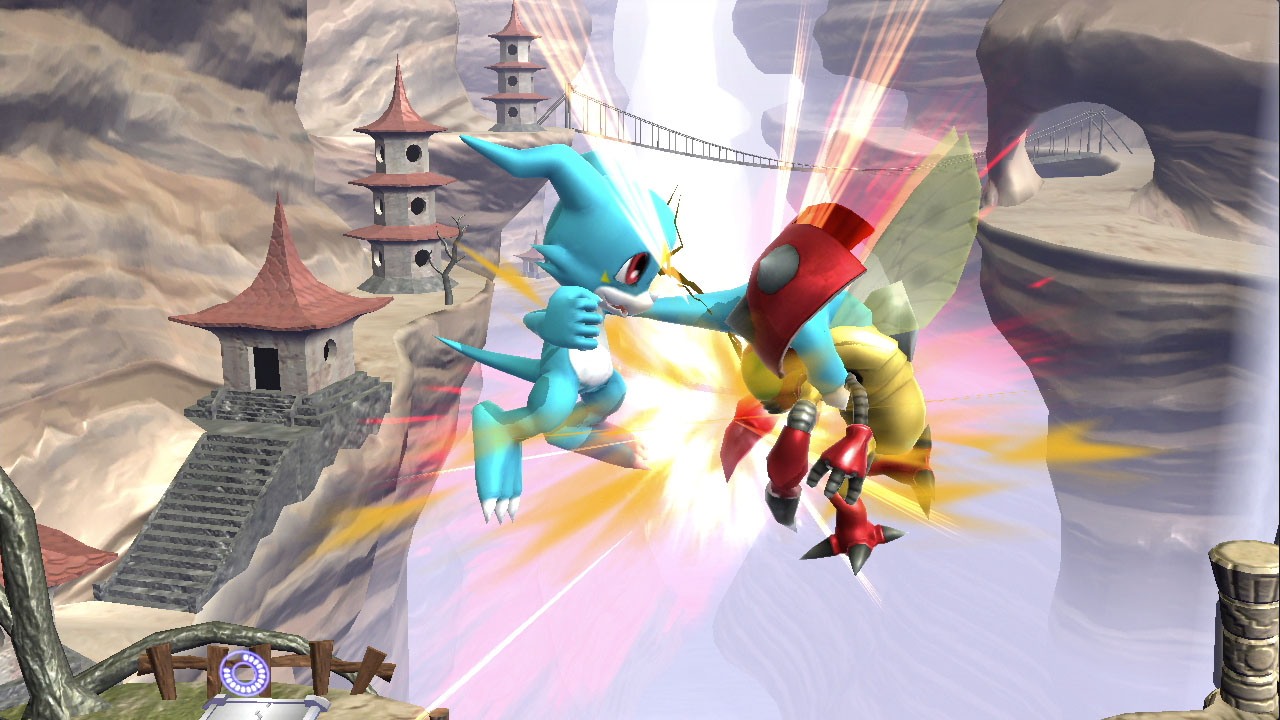
-
Digimon All-Star Rumble #3
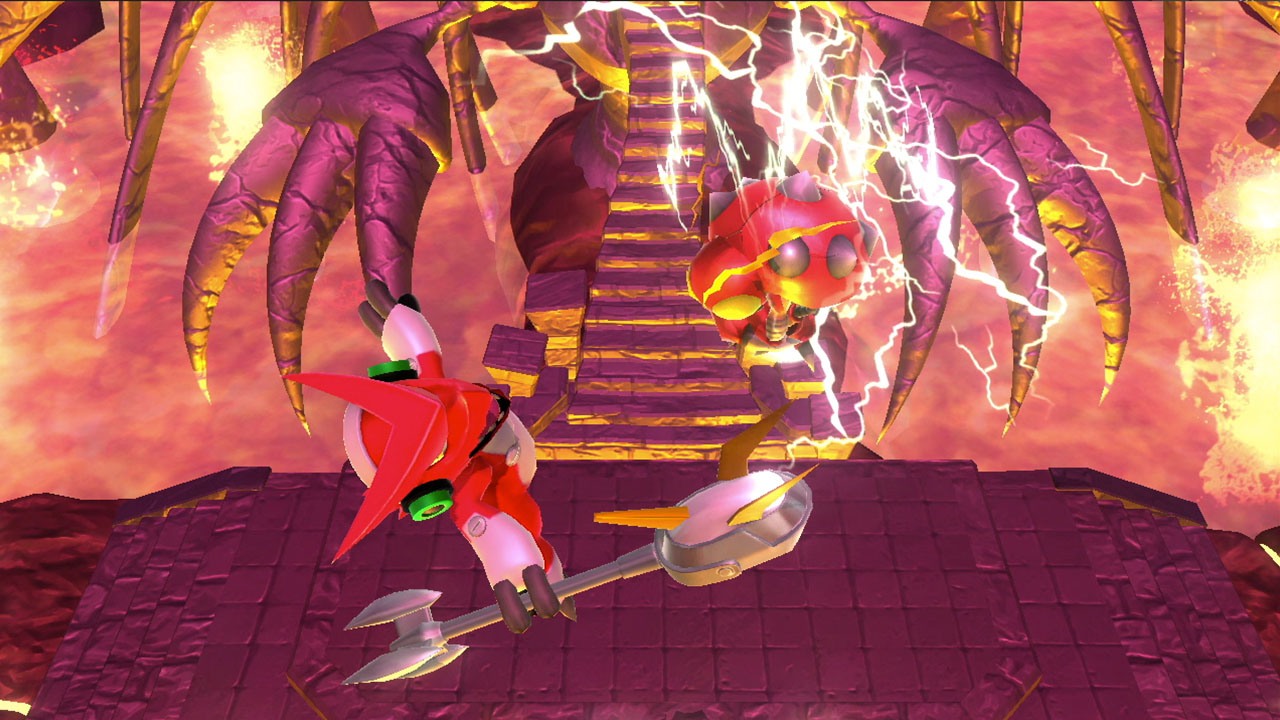
-
Digimon All-Star Rumble #4
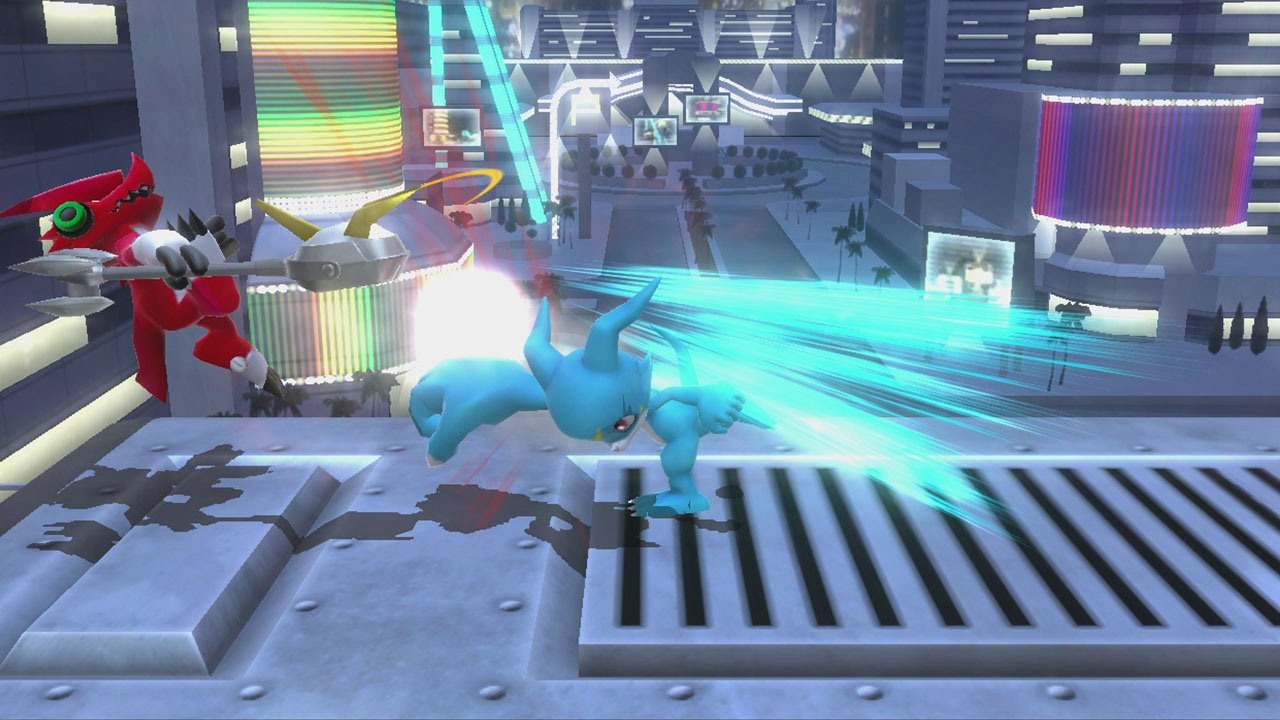
-
Digimon All-Star Rumble #5
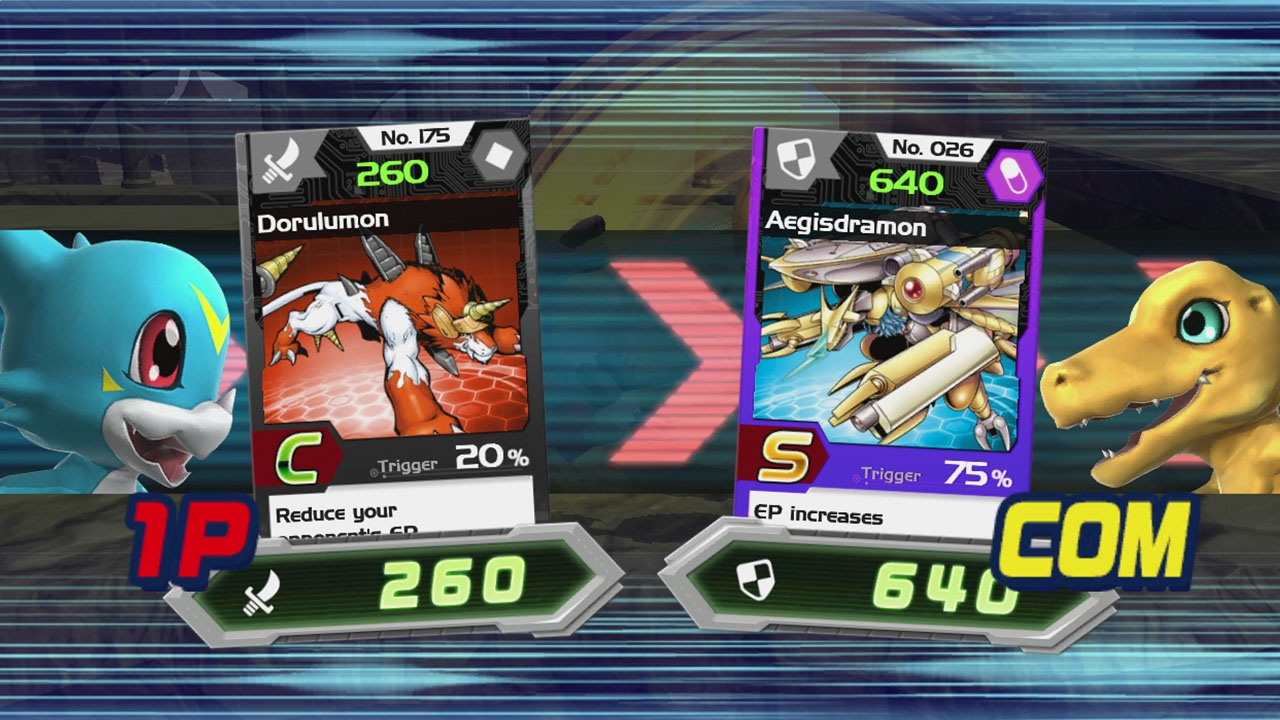
-
Digimon All-Star Rumble #6
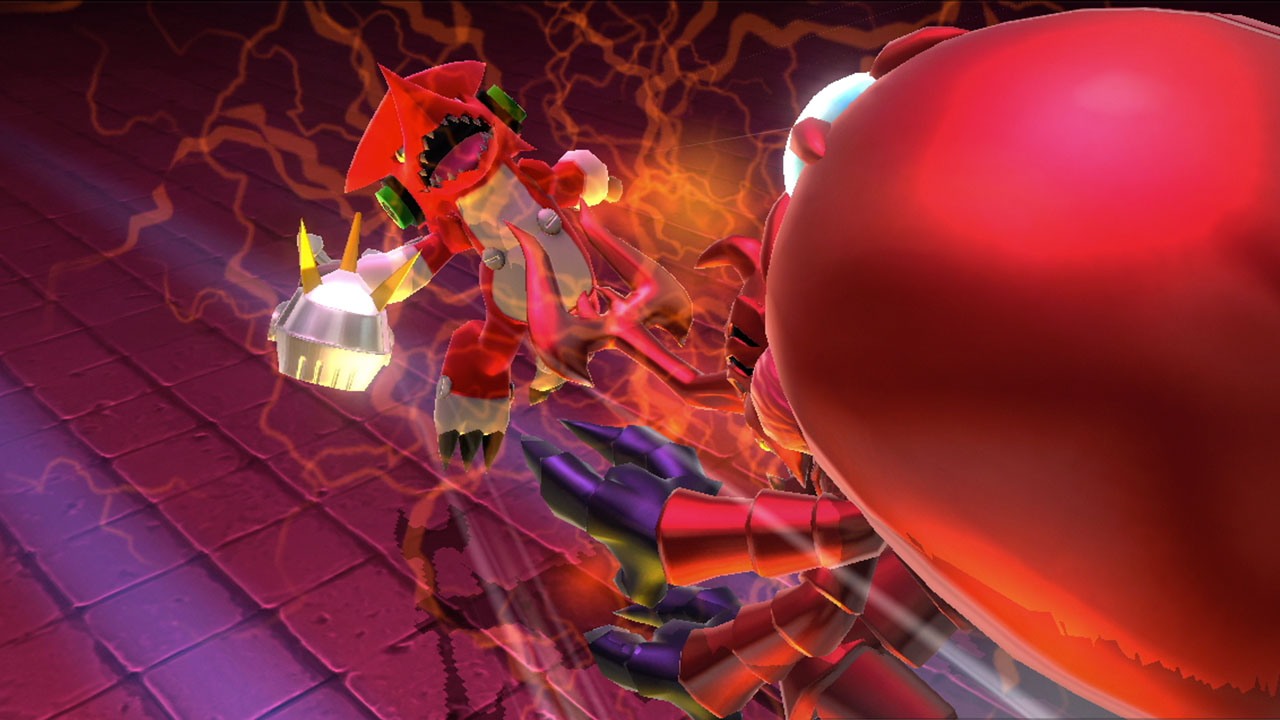
-
Digimon All-Star Rumble #7
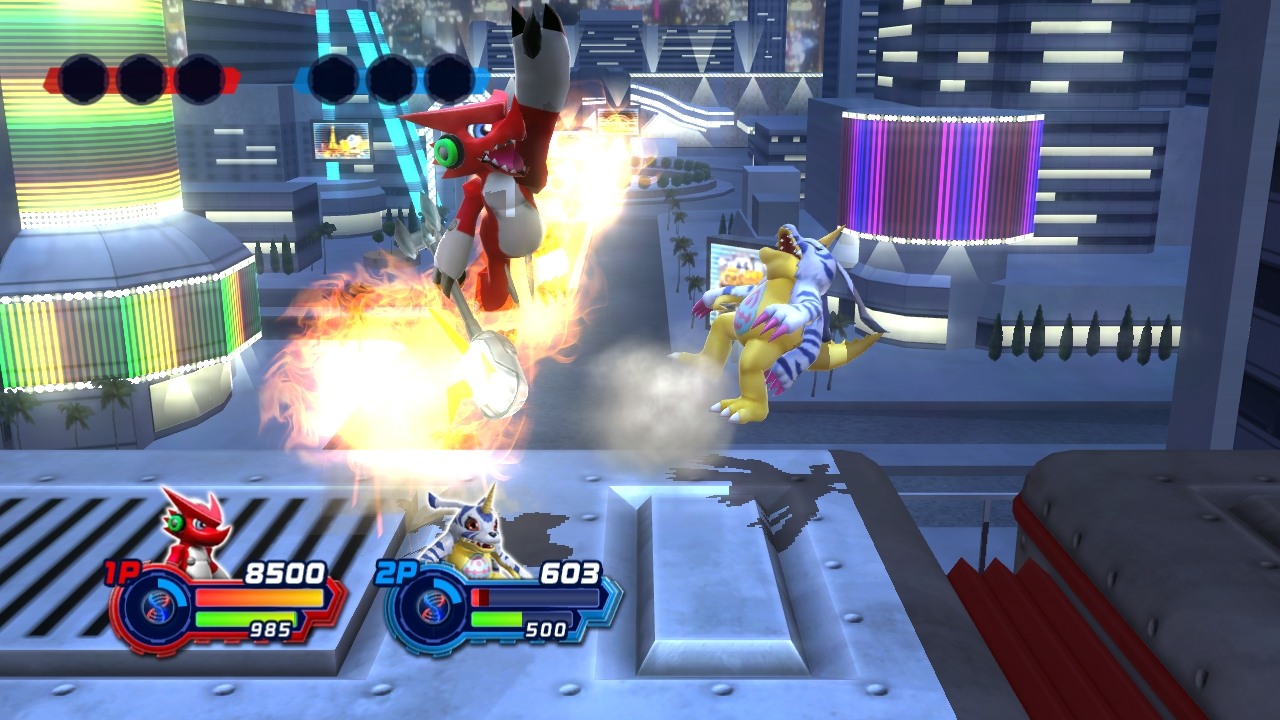
-
Digimon All-Star Rumble #8
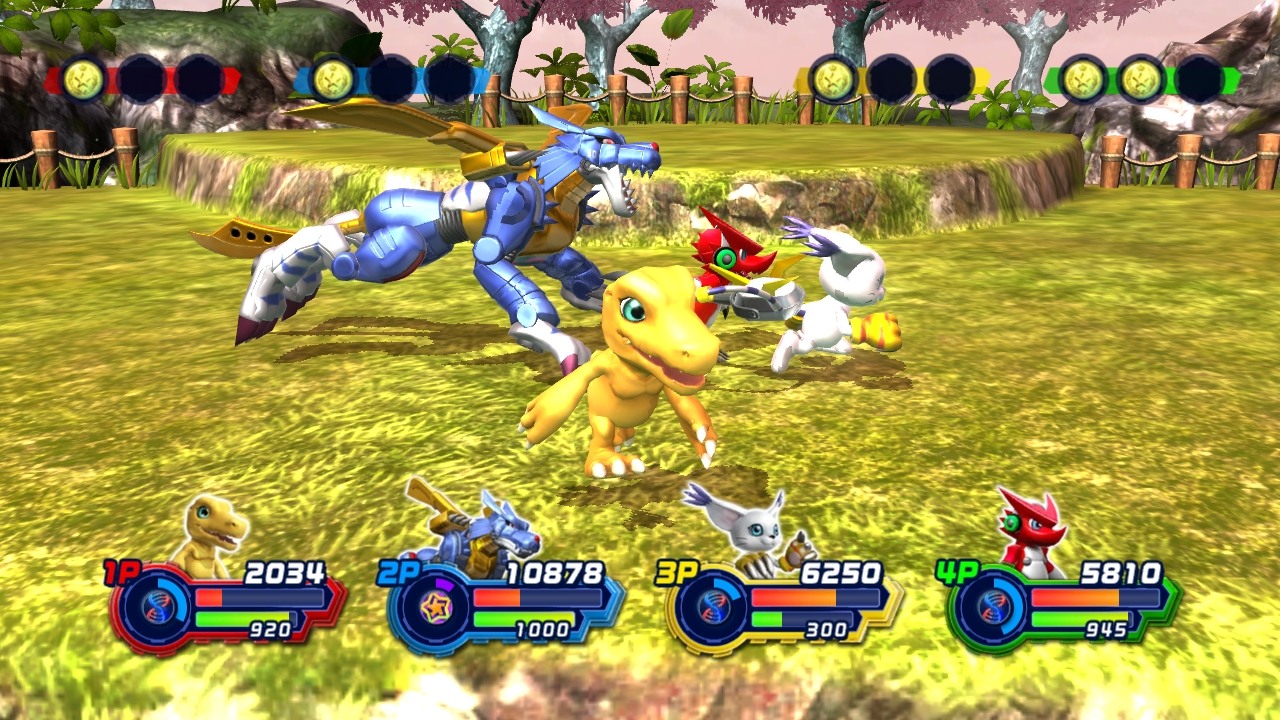
-
Digimon All-Star Rumble #9
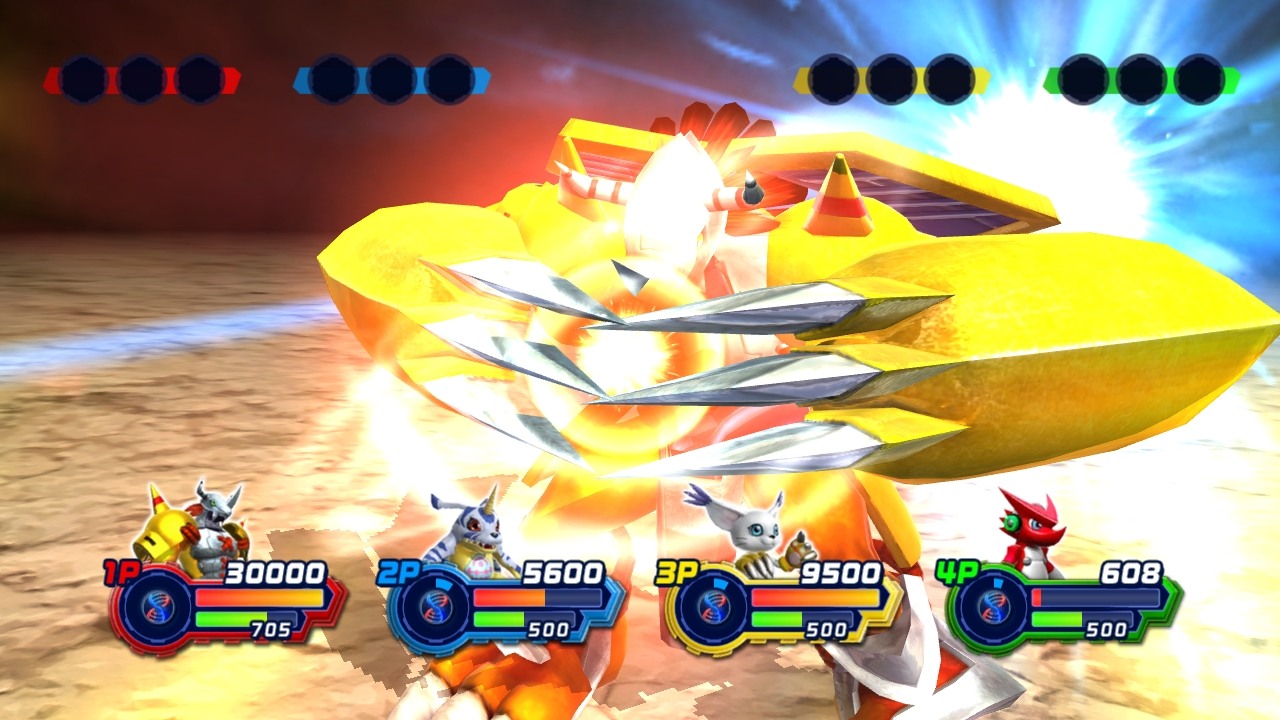
-
Digimon All-Star Rumble #10
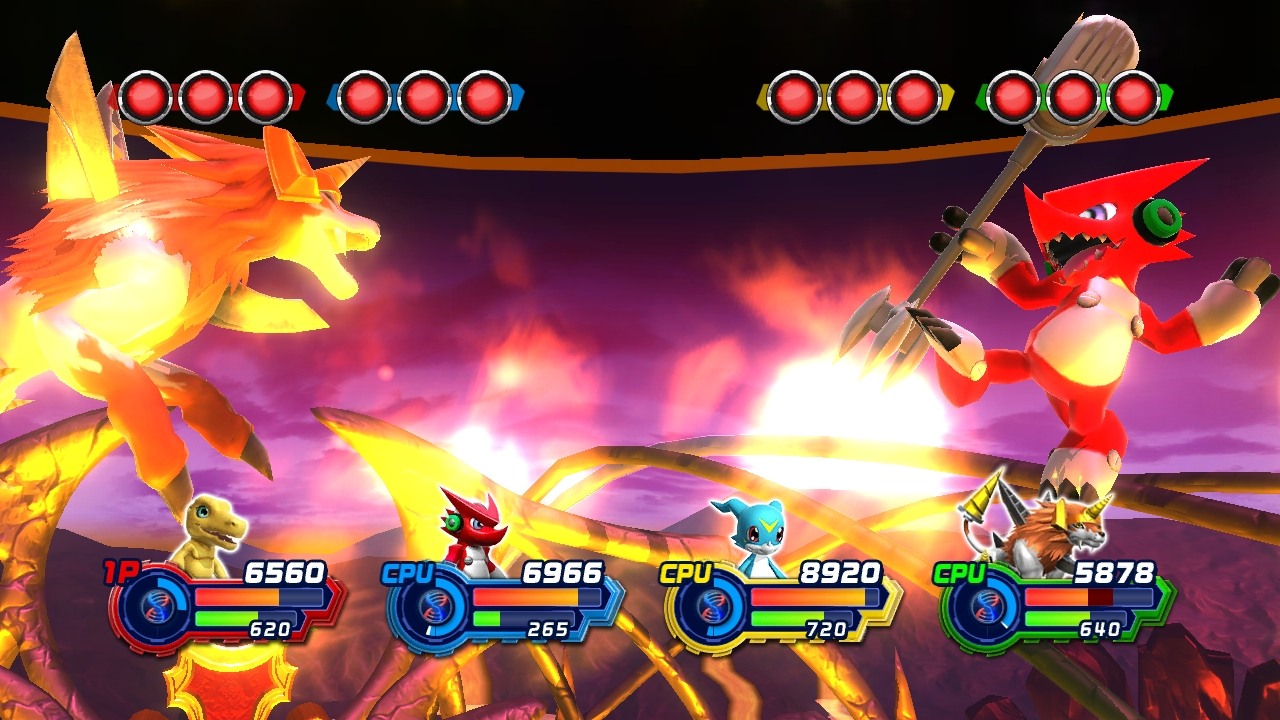
-
Digimon All-Star Rumble #11
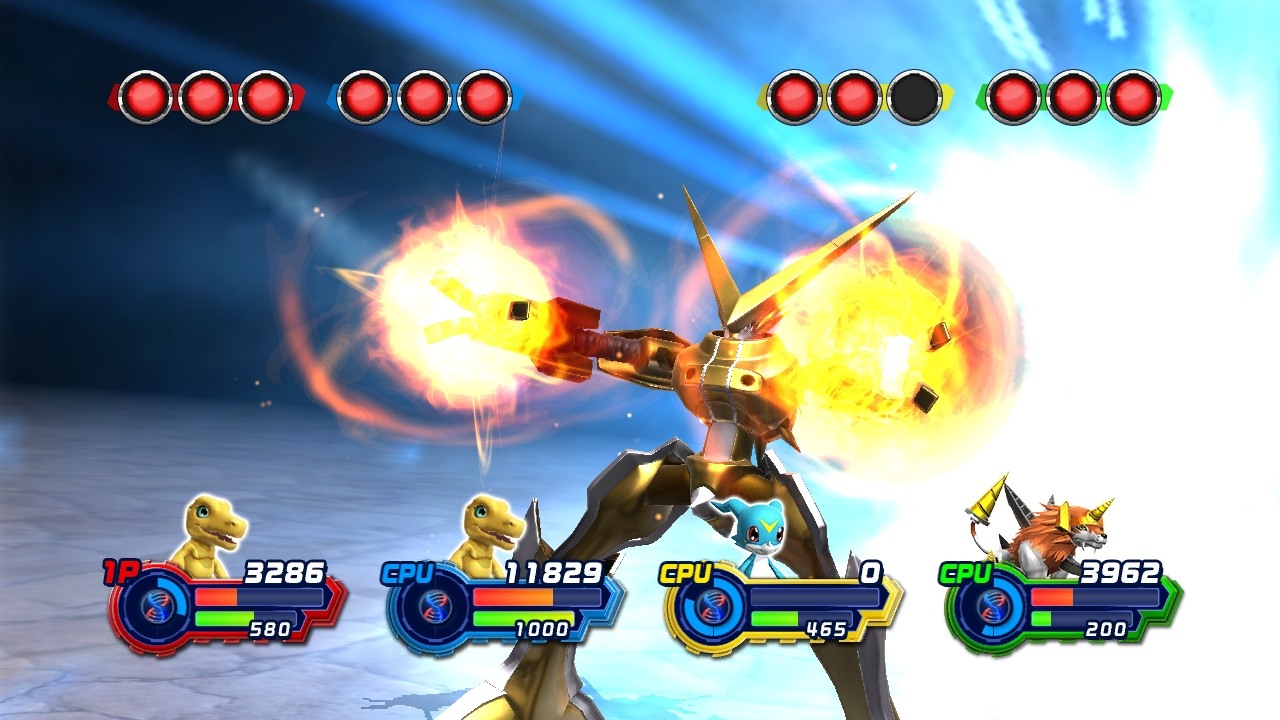
-
Digimon All-Star Rumble #12
